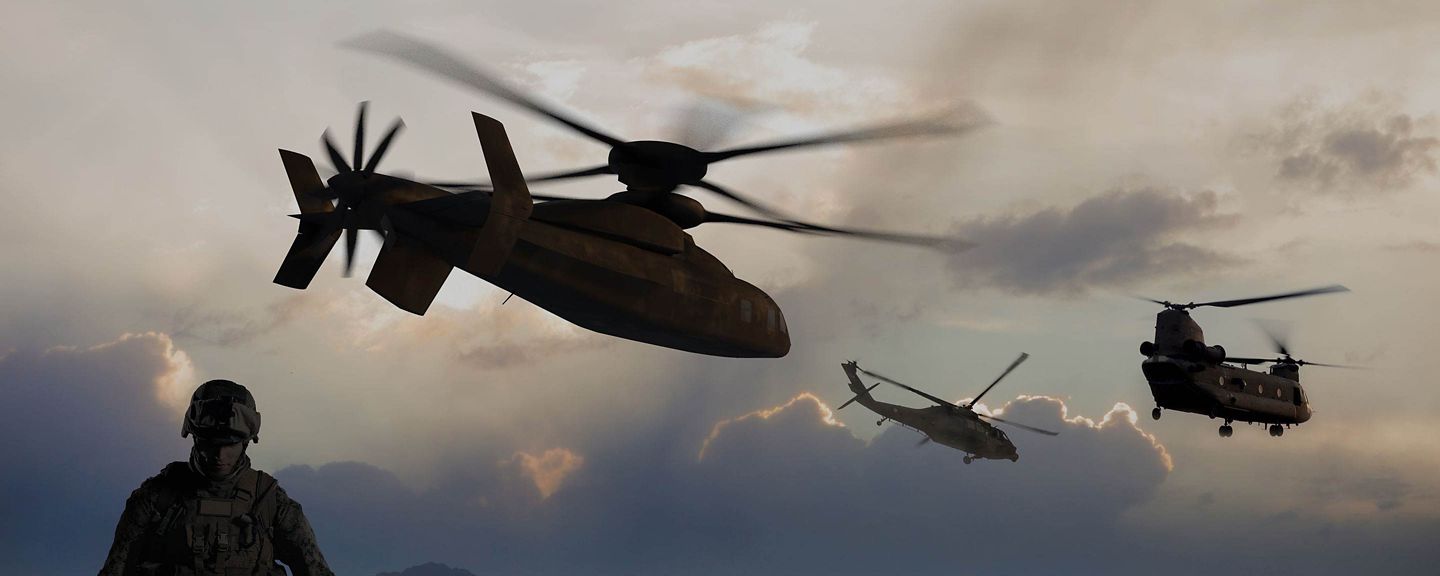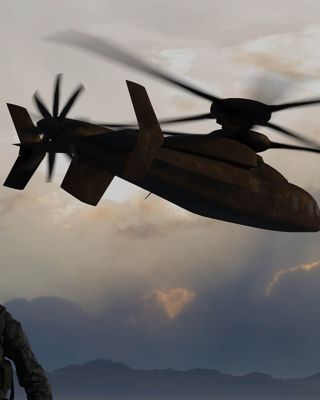-
Location
-
North America
-
Latin America
-
Asia Pacific
- |
- Sales & Service Partners
- |
-
Select Shopping Cart Account
Choose the account number for your parts ordering shopping cart. Your current cart will be saved when switching accounts.
Account# Account Name City Zip/Post Code CANCELPROCEEDMy Account
-
Industries
Industries
-
Location
-
North America
-
Latin America
-
Asia Pacific
- |
- Sales & Service Partners
- |
You are browsing the product catalog for
You are viewing the overview and resources for
Your browser is not supported.
For the best experience, please access this site using the latest version of the following browsers:
By closing this window you acknowledge that your experience on this website may be degraded.


When your mission relies on delivering the future, you can rely on us
Modernizing the Future of Battle.
The future of vertical flight requires new thinking, new technologies, new materials, and innovative designs to enable helicopters to fly faster and further, to improve payload, to lower operating costs, to improve reliability, be easier to maintain and operate and to deliver superior mission capability.
At Honeywell we pride ourselves on our innovation, born from our long and demonstrated heritage in the military rotorcraft market. Innovation that we are applying to help solve the biggest challenges related to delivering the future of vertical lift.
Our engine technology for example, can enable helicopters to fly faster and further, our connected offerings are making it easier, and more cost effective to manage maintenance and logistics, as well as enabling connected missions through fast, reliable and secure wi-fi. We are developing sensors, visualization, modular software components and open system computing to enable critical FVL missions, and so much more.
Running through all these capabilities, is our commitment to deliver the open architecture design the Army needs to be ready for anything.
Our Assessment: Enabling the Future of Helicopter Flight:
Improved Payload and Hot/High Performance
Our heritage in delivering engines designed to carry significant payload means we are uniquely positioned to take that heritage and radically improve performance in this area. New technology innovations designed to enable more fuel, troops, and cargo to be carried on-board are critical to delivering the Future Vertical Lift requirements.
Our engine technology has been at the forefront of helicopter operations, both in the US and internationally for decades. We have enabled the most critical hot and high missions to be successfully completed and we understand the absolute necessity of maintaining engine performance in these most challenging environments.
Reduced Size, Weight and Power Consumption (SWaP)
Our battle-proven capability across the complex network of systems required to deliver helicopter missions, means we are uniquely positioned to assess SWaP impact at the platform level. Our systems can enable navigation, radar, ground proximity warning, power generation, environmental control systems, connectivity to name a few. This comprehensive network of systems gives us the ability to assess the wholistic impact of Size, Weight and Power Consumption and optimize accordingly. Enabling superior capability with minimum SWaP requirements.
Connected Missions
The need for interoperability to enable joint operations is paramount. To enable this requirement connectivity is key, as is the security of mission critical data. Our connected portfolio securely delivers a transformation in the sharing of mission critical information. With hardware and software solutions designed to enable the ability to send and receive situational awareness data such as voice, text, graphics, imagery and video, our customers can rely on fast, reliable connections across a spectrum of networks. And with our cybersecurity solutions for military requirements, you can rely on us to connect your mission securely.
Condition-Based Maintenance
The future of vertical lift requires a revolution in the way helicopters are maintained. The missions of tomorrow will necessitate a shift away from time-based maintenance activities, to data driven, condition-based actions. We have been delivering condition-based maintenance for military helicopters for decades. We are taking our expertise and experience in this area and coupling it with our innovation, especially with our connected portfolio. It means we can access more data points than ever before, often in real-time and we can use that data to formulate predictive maintenance trends, create usage-based maintenance models and deliver a much sleeker overall maintenance operation, enabling longer time between maintenance events and reducing downtime of the helicopter.
Commonality and Open Architecture
At the heart of the success of the Future Vertical Lift program, is the need for commonality of systems to reduce costs and improve efficiencies in areas such as training, support equipment, maintenance and overhaul processes and procedures, supply chains and so much more.
Honeywell is already embedded across the current in-service helicopter fleet and we have been working closely with the Army on the benefits of common systems in-service today. For the FVL program we are taking a wholistic approach to our system design to ensure commonality across the current and future fleet.
We are also committed to providing the Army with the Modular Open Architecture (MOSA) design they need to deliver their mission. We are working to support the MOSA approach to deliver greater flexibility, reduced time to deployment and cost efficiencies for the US Army.
We are a committed partner to US Army Aviation, today, across the in-service fleet, and in the future to enable the FVL program.
If you would like to learn more about our offerings for the FVL program, please get in touch below.
Copyright © 2025 Honeywell International Inc.
Maximum File Size
Maximum Files Exceeded
Due to inactivity you will be logged out in 000 seconds.
Maximum File Size
Maximum Files Exceeded
Your documents are ready for you. Please click here to open.
Maximum File Size
Maximum Files Exceeded
There is an issue with invoices zip file download. Please go back and try again later. Thanks!
Maximum File Size
Maximum Files Exceeded
Your orders excel is ready for download. Please click here to download.
Maximum File Size
Maximum Files Exceeded
There is an issue with orders excel file download. Please go back and try again later. Thanks!

